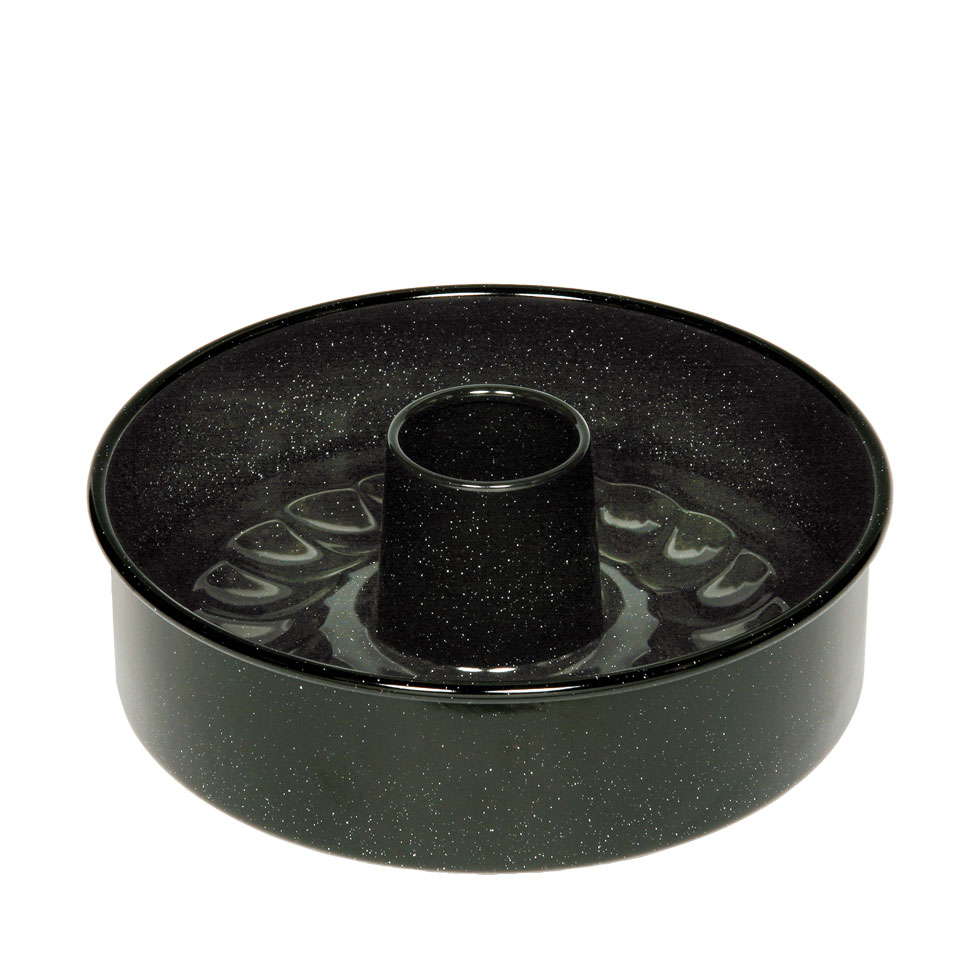Description
Features:
- Cold-forged, iron pan with long handle
- 32 und 40 cm diameter
- Can be heated to high temperatures for the quick sautéing or searing of meat, fried potatoes, etc.
- Suitable for ovens
- Suitable for all types of cookers (gas, electric, ceramic, induction, open flame)
- For energy-efficient cooking
- Cut and scratch-resistant
- Has a long life if cared for properly
- Recyclable
- CO2-neutral production in Austria
Description
Our family has been producing iron pans since 1550, long before we began manufacturing enamel pans. Our iron pans are made in a cold-forging process, during which a punched out steel sheet disc (round blank) is pressed into a deep-drawing mould under high pressure. A handle, which always includes some way for the pan to be hung up (hole or hook), is attached to the body of the pan. This means that the pan can be stored by being hung up, just like in the past.
Iron pans are very popular among cooks, not only for their rustic appearance but primarily for their excellent frying properties. Thanks to the fast, heat-conducting properties of iron, iron pans are perfect for quick sautéing or giving meat that appetising sear. Fried potatoes and meat can be cooked in the iron pan so that they are particularly crispy. The iron pans are often also used as serving pans and are paired with our trivet or with a round tray that sits underneath the pan.
The pans “work” better and better over time. The reason for this? The porous structure of the pan absorbs the fat and forms a so-called “patina”. This patina has excellent anti-stick properties and also acts as corrosion protection.
When cared for properly, so as to prevent any rust from forming, our RIESS iron pans are a faithful and lifelong companion on your kitchen adventure.
Use
As well as being used for its classic purposes of cooking fried potatoes, meat or gnocchi, the iron pan can also be used to prepare any dishes that require a pan.
Tips
Please note:
The wax layer, which acts as rust protection, must be removed with hot water before first use.
Afterwards, the pan must be “seasoned” so that it can develop a “patina” (= a natural coating which allows you to use less fat or oil when cooking).
This is how to do it:
- Heat enough fat
- Add slices of potato, potato peelings and lots of salt
- Fry for around 15 minutes, turning the potatoes until they become very dark in colour
- Dispose of the burnt potatoes
- Scrub the pan well with kitchen paper
Cleaning
Never put the pan in the dishwasher after use, instead simply wipe with a tea towel. If there is any heavy incrustation, clean the pan with water, salt and a brush and then leave to dry well on a warm stovetop.











